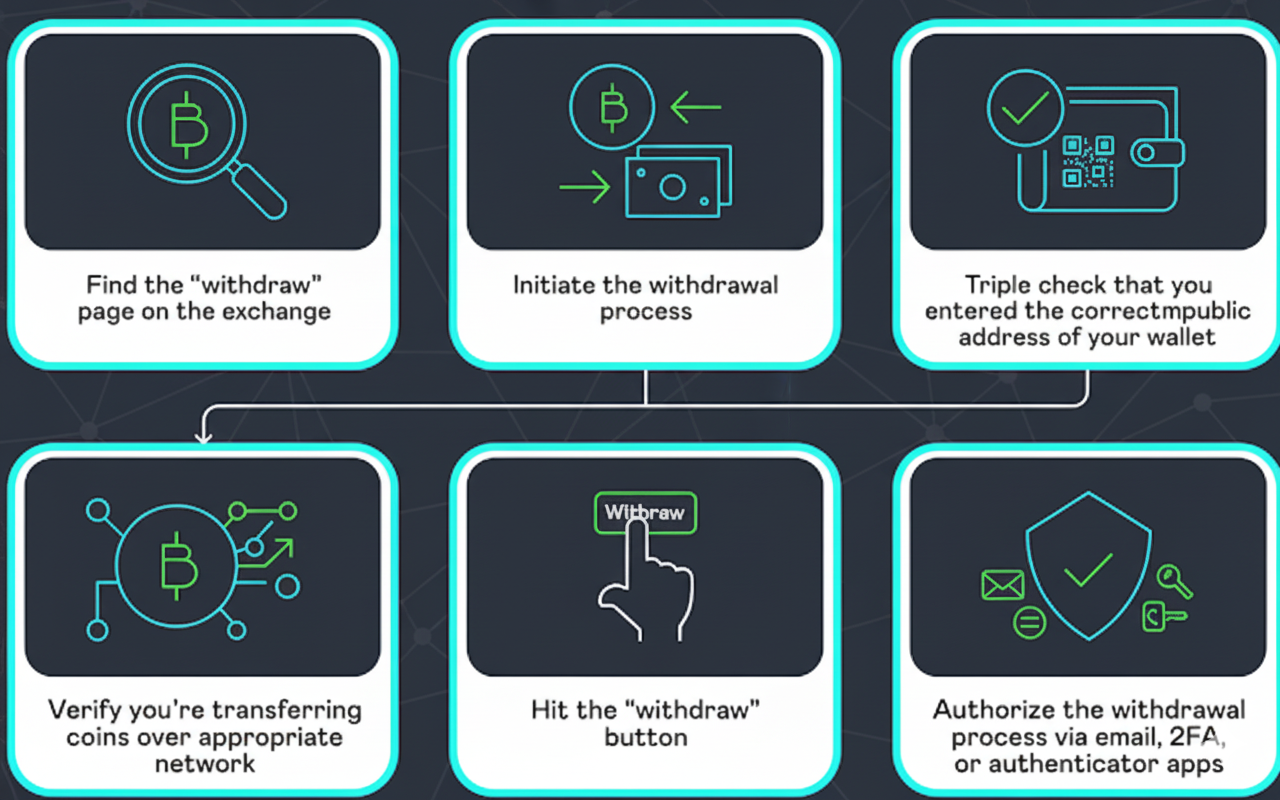There are different types of currencies in existence today. A currency’s value and purchasing power depend largely on the economic stability of its issuing nation. Each government has recognized money of its own, called fiat currency, a state-backed medium of exchange with no intrinsic value. Some currencies, however, don’t belong to any country but exist entirely online the cryptocurrencies.
Have you ever heard of a currency that doesn’t have intrinsic value yet is still accepted and honored globally? That’s fiat currency, the world’s dominant form of money. Understanding it helps clarify what happens when you decide to convert your crypto into cash.
Introduction to Fiat Currency
Fiat money is government-issued currency that isn’t backed by physical commodities like gold or silver. Its value comes purely from public trust and the issuing government’s economic stability. Think of it as a promise by a nation or central bank that this paper (or digital number) represents value.
Historically, fiat money dates back to 11th-century China and became widespread in the 20th century. Today, virtually every country uses fiat money dollars, euros, pounds, yen, shillings as legal tender.
How it works:
Since fiat currency isn’t tied to tangible assets, its worth relies on supply and demand, monetary policy, and confidence in the government that issues it. When economic performance is strong, the currency maintains purchasing power; when inflation surges or confidence falls, that value declines.
Advantages of fiat money:
- Greater stability than commodity-backed currencies, which fluctuate with metal prices.
- Gives governments flexibility to manage interest rates, liquidity, and inflation.
- Enables monetary policy tools that can stabilize economies.
Disadvantages:
- Critics argue that fiat’s unlimited supply risks inflation or currency devaluation.
- It depends on trust; once confidence erodes, the value collapses.
- Fiat systems can’t always prevent global financial crises.
Policy Shifts and the Future of Fiat and Crypto Conversions
There have been a series of new tax law changes enacted signaling that the U.S. financial landscape is entering a period of significant restructuring. Dubbed the One Big Beautiful Bill Act (OBBBA), these new laws consolidate and simplify several federal financial, tax, and reporting frameworks, and those changes are beginning to influence how both traditional fiat currency and digital assets are regulated and managed.
Key areas where OBBBA is already shaping the environment include:
- Monetary policy and federal oversight, with new mandates designed to streamline how fiat stability and liquidity are managed.
- Crypto tax reporting rules, particularly around recognizing gains when converting digital assets into cash.
- Regulatory alignment, reducing some of the previous fragmentation around crypto exchanges, on-ramps, and off-ramps.
As implementation phases roll out, OBBBA signals a broader shift in how the U.S. approaches the future of money. With fiat and crypto increasingly interconnected, the law positions the U.S. to modernize financial infrastructure while creating clearer pathways for individuals moving between digital and traditional currencies.
How Are Cryptocurrencies Different?
Both cryptocurrencies and fiat money are mediums of exchange and stores of value, but they differ fundamentally.
- Fiat currency is issued by governments, controlled by central banks, and recognized as legal tender.
- Cryptocurrencies, such as Bitcoin or Ethereum, are decentralized, borderless, and run on blockchain networks without intermediaries.
- While fiat depends on trust in institutions, crypto depends on cryptography and code.
In short, fiat money serves the needs of nations; crypto serves the needs of individuals.
Both coexist and often intersect when you decide to cash out your crypto gains into fiat.
How Do I Change Crypto Into Cash?
Now that you understand the distinction between fiat and digital currencies, let’s explore how to bridge the two worlds, in other words, changing crypto into cash.
The simplest method is through a centralized exchange (CEX) with fiat on- and off-ramps. These platforms let you sell your cryptocurrency for national currencies like USD, EUR, GBP, or even KES (Kenyan Shilling), then withdraw to your bank or mobile money account.
Step-by-Step: Converting Bitcoin to Euros or Dollars
- Choose a trusted exchange.
Select a reputable CEX that operates legally in your region. Popular examples include Coinbase, Kraken, Binance, Bitstamp, and OKX. - Verify your identity.
Most regulated exchanges require Know Your Customer (KYC) verification before enabling fiat deposits or withdrawals. This ensures compliance with local financial laws.
- Transfer your crypto.
Send your Bitcoin (BTC) or other coins (ETH, USDT, etc.) from your personal wallet to the exchange’s deposit address.
Tip: Always double-check the wallet network (e.g., Bitcoin network for BTC, ERC-20 for Ethereum-based assets).
- Sell to fiat.
Use a market or limit order to sell your crypto for fiat, for example, convert Bitcoin to euros or dollars. The funds will appear in your exchange fiat balance. - Withdraw to your bank.
Select your preferred withdrawal method: SEPA (for EUR), ACH (for USD), SWIFT, or other local rails and withdraw to your linked bank account.
Processing times vary from a few minutes (for instant cash-outs) to 1–3 business days, depending on the method.

Global Options for Cashing Out Crypto Gains
Here are the major exchanges that support fiat withdrawals:
- Coinbase — instant cash-outs via card or bank transfer.
- Kraken — supports USD, EUR, GBP, JPY, and others with clear fee tables.
- Binance — broad fiat coverage plus P2P trading for local payments.
- Bitstamp — offers SEPA and international wire withdrawals.
- OKX — regional cash-out methods by country.
Alternative Ways to Change Crypto Into Cash
If centralized exchanges aren’t available or convenient, you can also:
- Use P2P platforms (like Binance P2P) to sell directly to verified buyers.
In Kenya, Binance P2P and Yellow Card allow selling USDT or BTC for Kenyan Shillings (KES).
Traders often receive funds directly via M-Pesa, Kenya’s mobile-money platform.
This method gives fast liquidity even when banks restrict direct crypto transactions.
- Convert Bitcoin to USD/EUR with Visa
Visa has partnered with Transak to make crypto-to-fiat withdrawals nearly instantaneous.
Through Visa Direct, users in 64+ countries can convert their Bitcoin and other cryptocurrencies directly into local fiat currencies, including USD and EUR, via real-time card withdrawals.
This integration bridges digital assets with everyday financial systems, allowing users to access and spend their crypto as easily as traditional money.
It represents a major milestone in making crypto practical for real-world use.
- Withdraw through crypto ATMs that offer cash, though with higher fees.
- Spend via crypto debit cards (e.g., Binance Card, Crypto.com) that auto-convert crypto to fiat when swiping.
Fees, Timing, and Compliance
Before you cash out your crypto for fiat, compare:
- Withdrawal fees and conversion rates.
- Limits based on KYC level.
- Bank processing times (ACH may take days; SEPA is usually same-day).
- Tax obligations in most countries, selling crypto for fiat is a taxable event.
Always track gains, losses, and costs for reporting purposes.
Security and Best Practices
- Enable 2FA and secure your exchange account.
- Double-check wallet addresses and network choices.
- Use official apps and verified domains only.
- Keep copies of your transaction records for tax and compliance.
Fiat vs. Crypto: The Future of Money
Fiat and crypto represent two sides of the same coin, the old and the new worlds of finance.
Fiat money, with its stability and government oversight, remains vital for trade, salaries, and banking.
Cryptocurrencies, on the other hand, enable borderless transfers, decentralized finance (DeFi), and digital ownership, reshaping how we perceive money itself.
While fiat currency remains the “cash” you eventually withdraw to your bank, crypto continues to drive innovation and financial inclusion globally.
In developing markets like Kenya, Nigeria, and the Philippines, crypto-to-fiat bridges (such as mobile-money rails) are becoming a lifeline for freelancers, traders, and remittance receivers.


